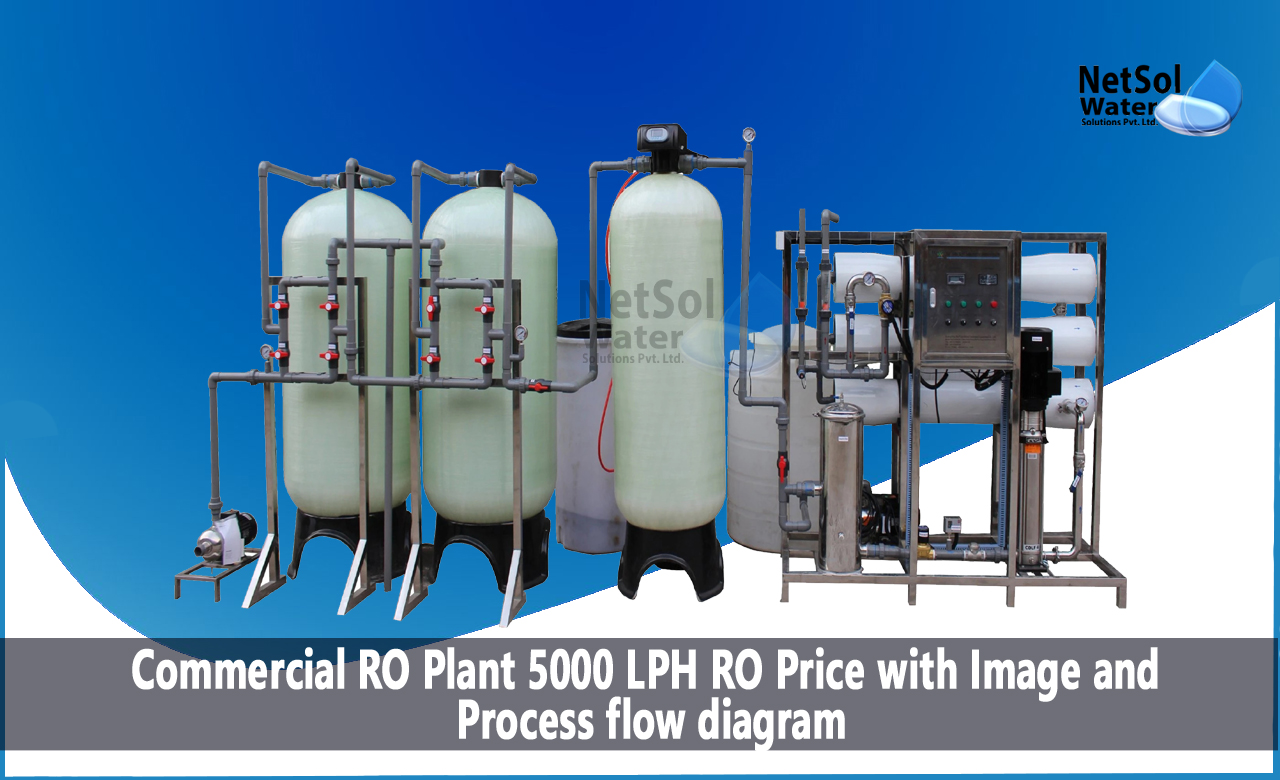5000 LPH Commercial RO Plant Price with Image and Process flow diagram
Commercial Reverse Osmosis (RO) Plants are essential infrastructures that are used in a variety of industries, such as pharmaceuticals, food and beverage, and hospitality. A commercial RO plant with a capacity of 5000 liters per hour (LPH) is an ideal choice for medium-sized industries.
In this blog, we will discuss the price of a 5000 LPH commercial RO plant, along with its process flow diagram and details.
Price of 5000 LPH Commercial RO Plant:
The price of a commercial RO plant with a capacity of 5000 LPH depends on various factors, such as the quality of the components used, the type of membranes, and the automation level. On average, the price of a 5000 LPH commercial RO plant can range from $10,000 to $50,000. However, the price can vary significantly based on the manufacturer and the customization required.
Process Flow Diagram:

The process flow diagram (PFD) for a commercial RO plant with a capacity of 5000 LPH includes the following stages:
- Pre-treatment: The influent water is passed through various stages of pre-treatment to remove suspended solids, turbidity, and organic matter. This includes the use of a multi-media filter, activated carbon filter, and an antiscalant dosing system.
- High-Pressure Pump: The pre-treated water is then pumped to a high-pressure pump, which increases the pressure of the water to the required level.
- Reverse Osmosis: The high-pressure water is then passed through the RO membrane, where the dissolved solids and contaminants are removed, leaving behind clean water.
- Post-Treatment: The clean water from the RO membrane is passed through a post-treatment stage, which includes the use of an ultrafiltration system, UV disinfection, and a mineral dosing system.
- Storage: The treated water is then stored in a storage tank before being distributed to the various end-users.
Details of the Commercial RO Plant:

The commercial RO plant with a capacity of 5000 LPH consists of various components, each of which plays a vital role in the treatment process. Some of the critical components of the commercial RO plant include:
- Multi-Media Filter: This filter is used to remove suspended solids and turbidity from the influent water, ensuring that the RO membrane is not fouled.
- Activated Carbon Filter: The activated carbon filter is used to remove organic matter, chlorine, and other contaminants that can cause fouling of the RO membrane.
- Antiscalant Dosing System: This system is used to inject antiscalant chemicals into the influent water, preventing the formation of scales and reducing the risk of membrane fouling.
- High-Pressure Pump: The high-pressure pump is used to increase the pressure of the water, allowing it to pass through the RO membrane.
- RO Membrane: The RO membrane is the heart of the commercial RO plant, responsible for removing dissolved solids and contaminants from the water.
- Ultrafiltration System: The ultrafiltration system is used to remove any remaining suspended solids and bacteria from the treated water.
- UV Disinfection: The UV disinfection system is used to disinfect the treated water, ensuring that it is safe for consumption.
- Mineral Dosing System: The mineral dosing system is used to add minerals back into the treated water, ensuring that it is of high quality and tastes good.
Conclusion:
In conclusion, a 5000 LPH commercial RO plant is an essential infrastructure for medium-sized industries, ensuring that the treated water is of high quality and safe for consumption. The price of a commercial RO plant with a capacity of 5000 LPH can vary based on various factors, such as the quality of components used and the automation
You may reach us by phone at +91-9650608473 or by email at enquiry@netsolwater.com if you have any questions about our products, services, or support.



